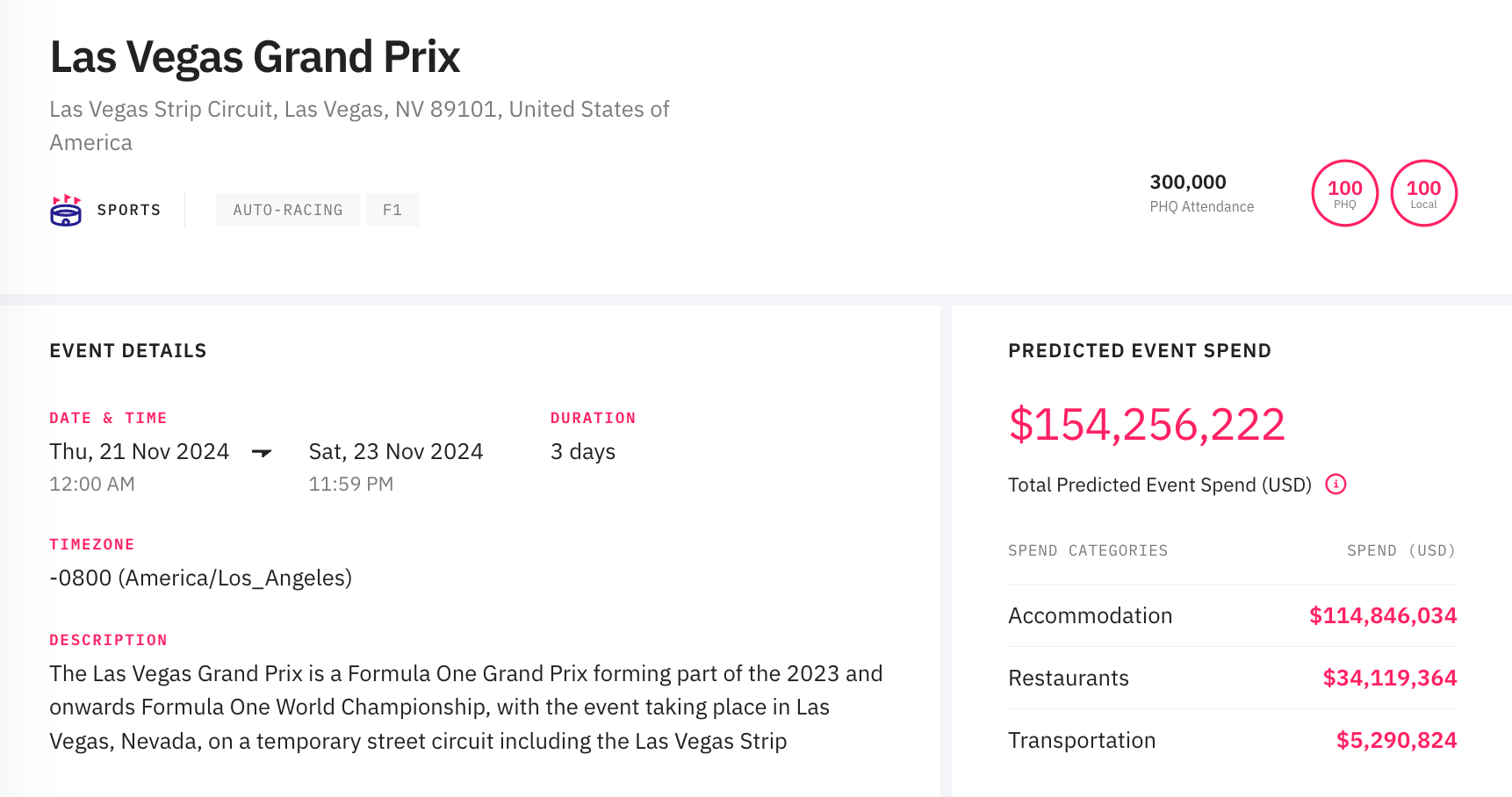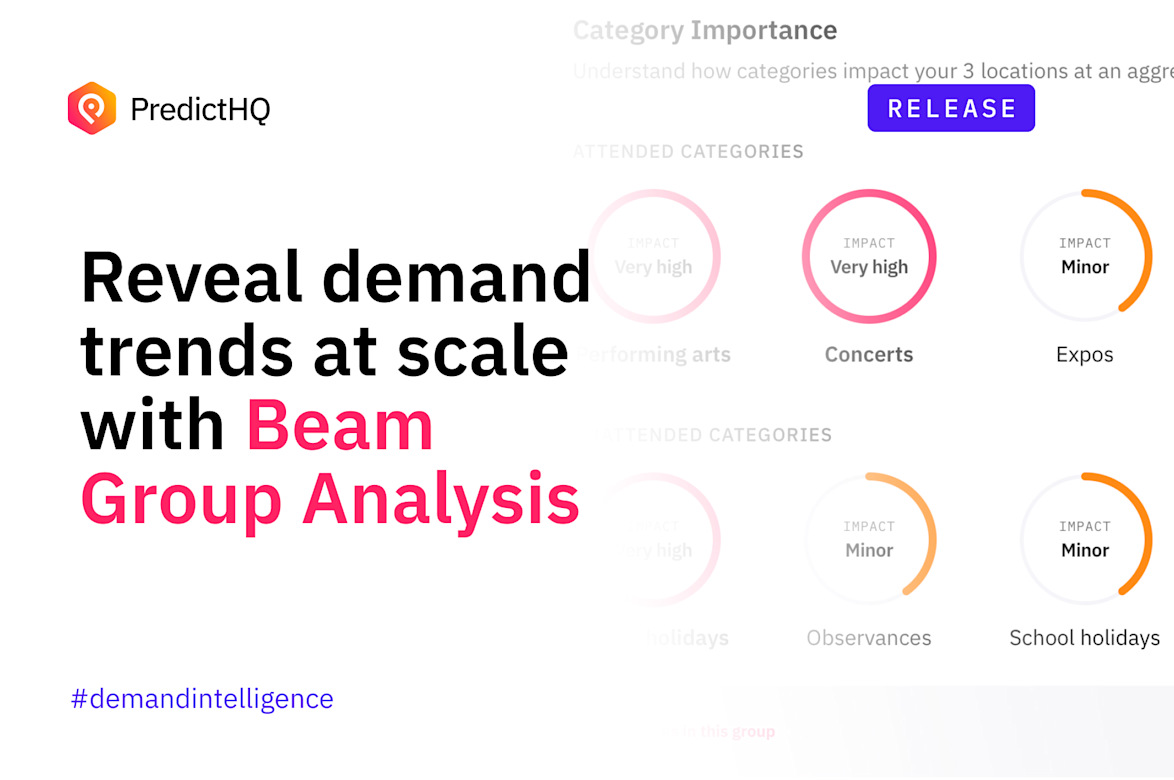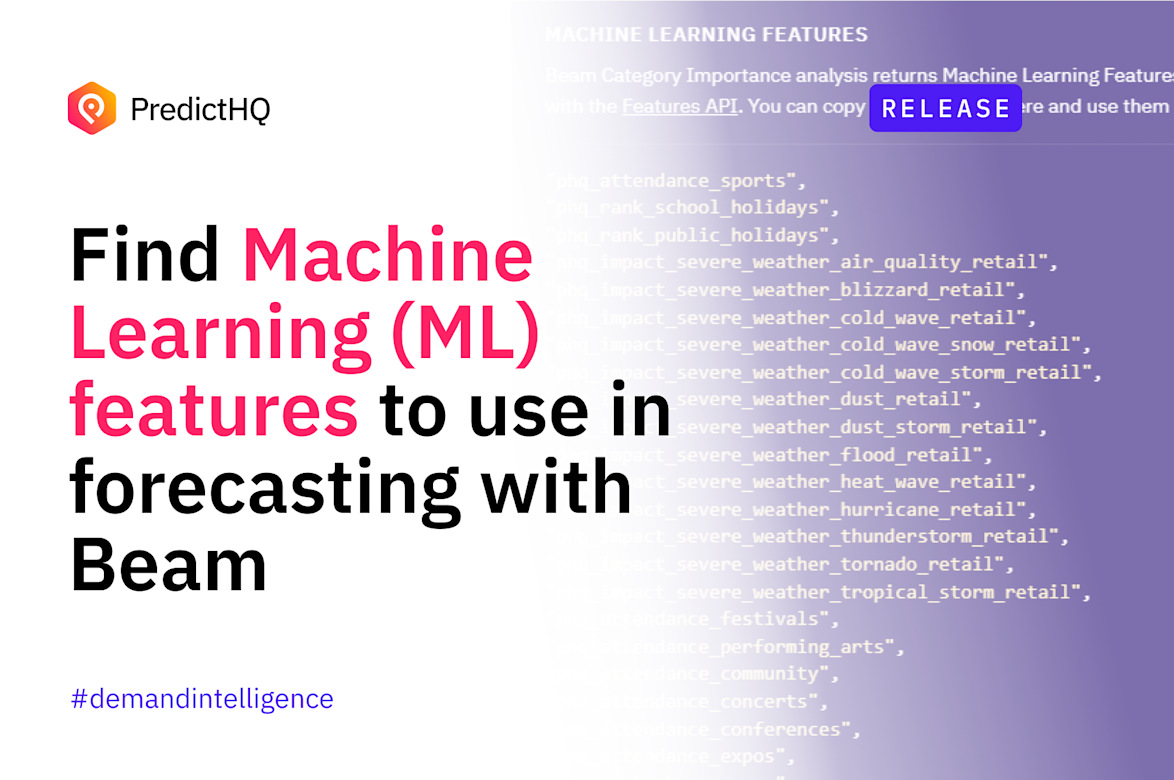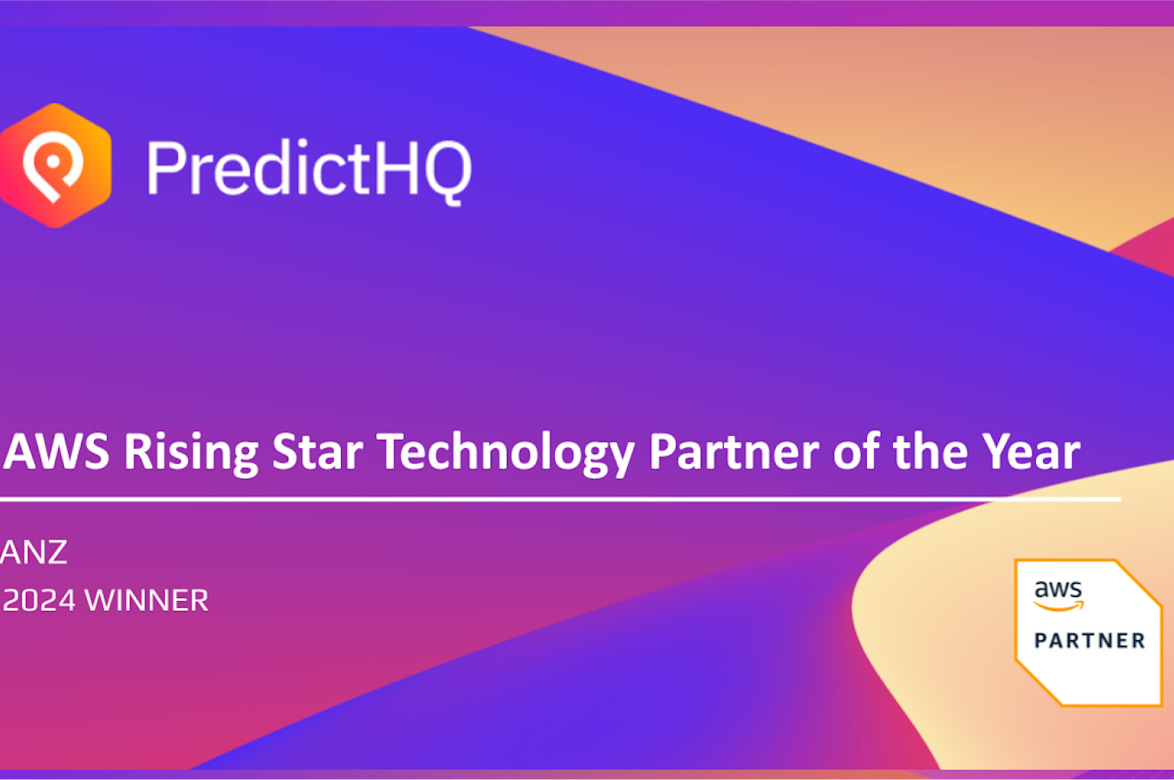Event Impact Analysis: How Hotels Use Event Data to Capture Millions

Predicting demand volatility in the hospitality industry
Demand volatility presents a unique set of challenges for hotel operators and Airbnb owners in the ever-evolving hospitality industry. Beyond the delicate balance of supply and demand, unpredictable factors like shifting travel trends, seasonal fluctuations, and unexpected events can dramatically disrupt booking patterns and leave revenue on the table.
While peak periods fueled by concerts and eclipses bring surging booking demand for hotels and Airbnb properties, they also make it harder to meet guest expectations in terms of service quality, availability, and pricing. Conversely, low-demand periods with minimal events pose challenges in attracting guests and maintaining profitability.
Navigating these fluctuations requires pinpoint forecasting accuracy and contextual data that captures events happening in the real world. By using event impact analysis to understand how events impact booking patterns, accommodation providers are:
Optimizing inventory and dynamic pricing to meet fluctuating demand
Maximizing occupancy and revenue across the entire year
Positioning themselves as the preferred choice for guests
The proof lies in the data. By leveraging event impact analysis, a leading global hotel group increased their demand forecast accuracy by 7.1%, translating to an estimated $400,000 annual revenue gain in just one US city through optimized inventory management and room pricing. That’s one city, imagine the impact at scale. In this article, we delve into how you, too can harness this powerful tool to maximize RevPAR and occupancy at scale.
What is event impact analysis?
Event impact analysis is a critical tool for accommodation providers looking to understand the potential effects of upcoming events on their operations. It offers hoteliers a future-oriented perspective by considering historical event data and their impact on booking patterns, upcoming events including predicted attendance and demographics, and market trends such as event-driven spending for local businesses. For example, event impact analysis revealed the following business insights:
For one of the world's leading hotel brands, analyzing event impact on their demand vs their competitors revealed they were missing 20.6% of available conference-related demand.
For a world-leading hotel chain, implementing event impact analysis led to a ~9% improvement in forecast accuracy on highly impacted days, and almost 12% on low impact days.
This enriched data set, when layered onto historical sales and forward-looking booking curve data, empowers these businesses to master predictability and take action in the following ways:
Identify demand anomalies: Deviations from historical booking curves can be flagged and attributed to specific events using intelligent event data, allowing for targeted adjustments in the future.
Predict booking velocity: By analyzing historical and predicted event impact alongside booking curves, hoteliers can forecast how quickly rooms will be booked leading up to an event, informing pricing and inventory management strategies.
Segment guest behavior: Combine booking curve data with event impact analysis to personalize marketing efforts and tailor room packages to specific types of guests.
In essence, event impact analysis acts as a powerful lens, enhancing the value and insights provided by internal sales data and booking curve visualizations. This layered approach empowers hoteliers to move beyond static visualizations and make data-driven and real-time decisions that optimize revenue and occupancy, particularly during periods impacted by events.
F1 Grand Prix revs up the event economy and injects billions into Vegas

Events from concerts and conferences to festivals and sports competitions, can significantly impact tourism levels and hotel demand in the surrounding area as the influx of event attendees leads to surging booking numbers, limited availability, and higher room rates.
For example, during the Formula 1 Grand Prix in Las Vegas in November 2023, room rates hit record highs with some resorts near the race track offering million dollar packages for the weekend of the race. Other notable impact the event had on accommodation trends as compared to the same period in November 2022:
RevPAR: Up 34.8% to $204
Average Daily Room Rate (Strip Hotels): Up 37.7% to $270
Average Daily Room Rate (Downtown Las Vegas): Up 10.6% to $108.67
The event attracted millions of visitors, with local airlines reporting 4.8 million passengers arriving and departing specifically for the race. These visitors contributed $94M+ in spending to the local economy with $35M+ of that going to accommodation providers.
The spending didn’t stop there! The race transformed what was historically a slow month for the Las Vegas Strip, with state-wide gaming revenue reaching a record high of $1.374 billion, demonstrating the lucrative potential of events for hospitality businesses with the right data and strategies to capitalize on them.
Taking control with event impact analysis
The F1 Grand Prix represents a demand surge driven by a single event, but major influxes of visitors and spending are also commonly driven by smaller events that overlap, which is notoriously more difficult to track. Event impact analysis reliably reveals these opportunities at scale, helping revenue managers identify rich pockets of event-driven consumer spending that otherwise would have been unknown.
The dynamic nature of event-driven demand presents both a challenge and an opportunity for accommodation providers. Event impact analysis empowers them to navigate this complexity and transform event impact into a strategic advantage. By leveraging historical data, market trends, and intelligent event information, event impact analysis offers valuable insights, such as:
Forecasting future demand: Predict how upcoming events will influence booking patterns, powering proactive preparation for peak periods. This valuable insight enables informed decision-making for pricing, marketing campaigns, and the creation of event-based promotions and packages that shape demand and capture a larger share of event-driven revenue.
Optimizing dynamic pricing strategies: Adjust room rates strategically to capitalize on peak periods associated with events and mitigate potential losses during slower times. Analyze historical and predicted event impact alongside booking curves to forecast how quickly rooms will be booked leading up to an event, allowing for optimal pricing and packaging to maximize RevPAR.
Enhancing event-based marketing: Target event attendees with tailored marketing campaigns and personalized room packages based on their demographics, interests, and expected arrival dates. This data-driven approach can significantly increase conversion rates and capture a larger share of event-driven bookings.
Demand forecasting in the accommodation industry just got smarter
The accommodation landscape is undergoing a data-driven revolution, fueled by smart event data and predictive analytics empowering various players in the space to transform how they approach event-based demand:
Global hotel chains use event impact analysis to identify high-impact events, optimize pricing and promotions, and capture a larger share of bookings.
Short-term rentals and Airbnbs use this data to target event attendees with laser-focused marketing, ensuring increased occupancy during peak periods.
Resorts leverage event impact analysis to create tailored packages and promotions that resonate with event attendees, maximizing revenue and guest satisfaction.
Casinos use this information to optimize staffing levels and entertainment offerings based on event data, providing an unforgettable experience for guests during busy weekends.
Event impact analysis provides valuable insights for these businesses, helping them to maximize their revenue and provide a better experience for their guests. By leveraging this data, businesses are staying ahead of the competition and ensuring their success in an increasingly competitive market. Join the ranks of leaders in the accommodation space using event impact analysis to align pricing and inventory management with evolving demand patterns to maximize revenue and occupancy.





